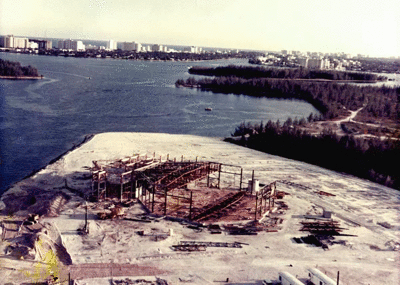The building that today houses FIU’s renowned Chaplin School of Hospitality & Tourism Management at BBC was originally envisioned as the private Inter-American Trade and Cultural Center. When construction stopped due to lack of funds, President Charles E. Perry successfully lobbied the Florida Legislature to purchase it for FIU. Completed in 1976, the edifice and its grounds were added to the land already allocated for FIU’s second campus, then called Bay Vista, which opened in 1977.
In celebration of the 50th anniversary of the university’s founding, FIU Magazine takes a journey back in time. Sharing images provided by Special Collections & University Archives, each one paired with a more recent photo, we show how campus and students have changed. Throughout FIU’s evolution, however, one thing is clear: We are all Panthers united in a common bond across history and connected to a place that continues to mean so much to so many.
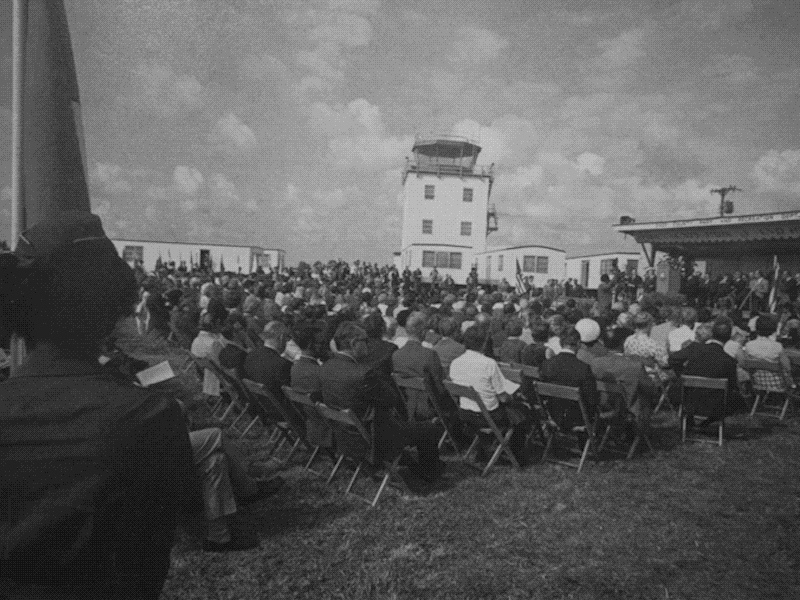
FIU’s groundbreaking ceremony on January 25, 1971, brought out scores of dignitaries from across the state – and one very special guest: then-Secretary General of the United Nations U Thant. The iconic air-traffic control tower, a vestige of MMC’s former life as an airport, can be seen in both photos. Today the historic structure serves as FIU’s Office of Military and Veteran Affairs.
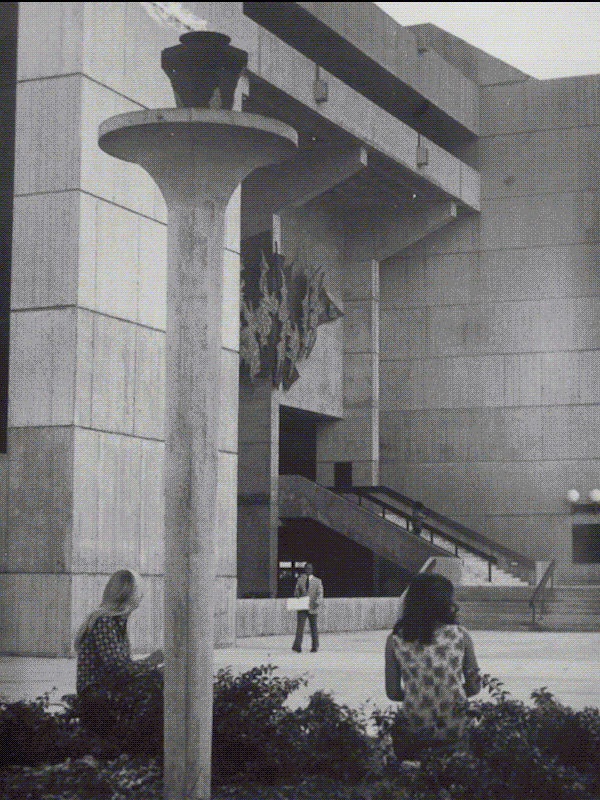
The Torch of Knowledge, Service and Understanding was first lit on FIU’s opening day, September 14, 1972. The fixture underwent a decorative upgrade at some point—note the faux flames in the contemporary photo—and is still lit on special occasions. The symbol in 2002 inspired the naming of the Alumni Association’s Torch Awards, the annual ceremony in which outstanding graduates are lauded for their accomplishments.
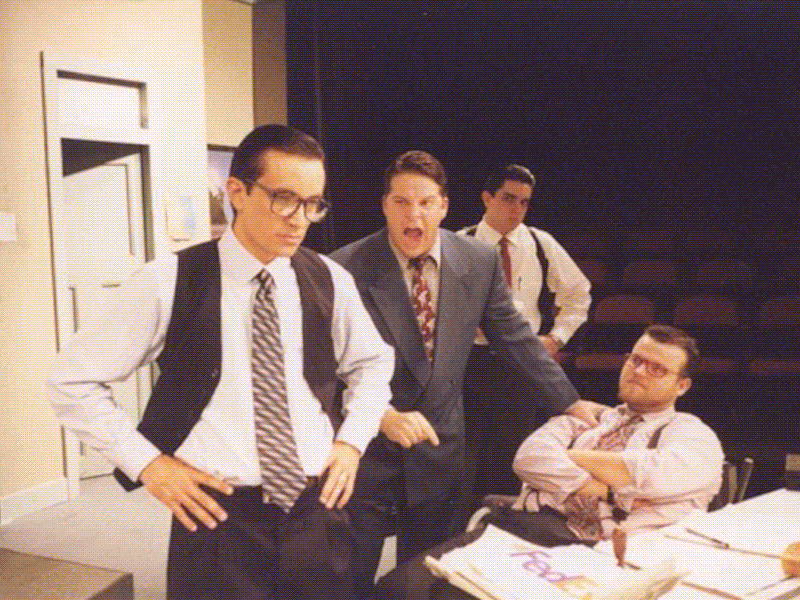
The Department of Theatre’s 2013 revival of Glengarry Glen Ross reunited the original cast of its 2002 production. Written by David Mamet, the play is about four real estate agents who engage in unethical and, at times, illegal acts to sell undesirable real estate. Pictured, from left, are alumni Ivan Lopez, Joe Llorens, Ricky Waugh and Daniel Gutierrez.
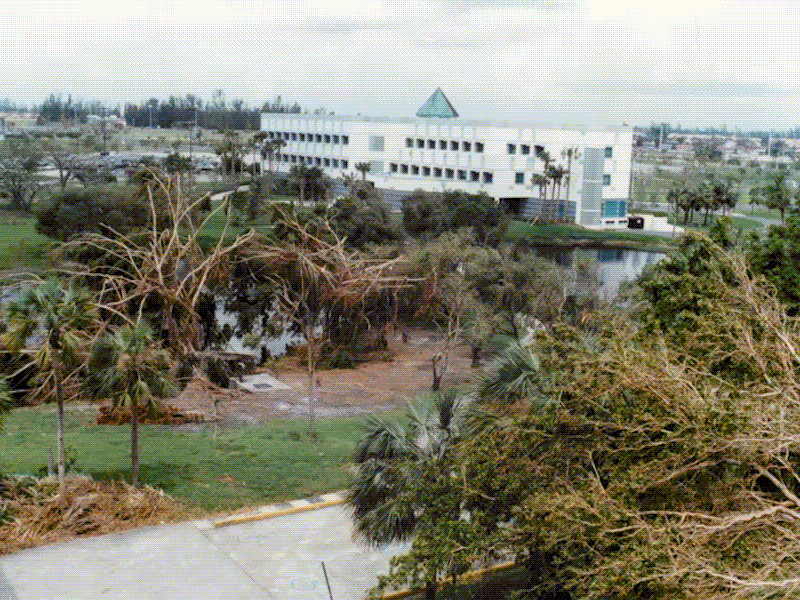
On August 24, 1992, Hurricane Andrew devastated South Florida. Just days from the scheduled opening of the fall term, FIU postponed the start of classes by two weeks as its employees pulled together to help colleagues left homeless by the storm and to reach out to others in the community. (The GC ballrooms became a makeshift warehouse and sorting center for relief supplies.) Workers also logged long hours to bring FIU back into working order, mainly at the Southwest Miami-Dade campus, where damage exceeded $6 million (the equivalent of nearly $10 million in today’s terms).
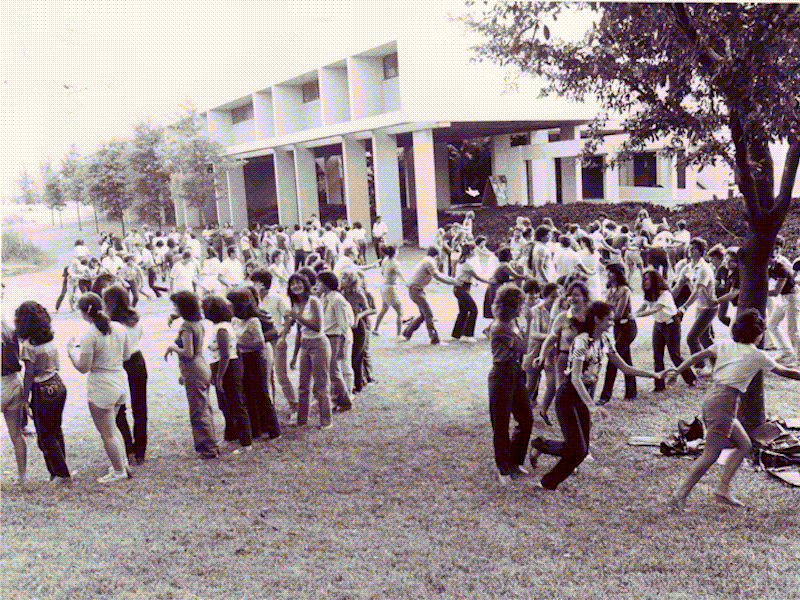
In an undated photo, students gather outside the Owa Ehan building at MMC to enjoy the grassy space surrounding a small manmade lake (not shown) that still exists today. In support of hungry students, a permanent food truck—Miro’s kosher barbecue—now stands sentinel on the southwest corner of Owa Ehan (and abutting the Green Library), making it easy to feast outdoors.
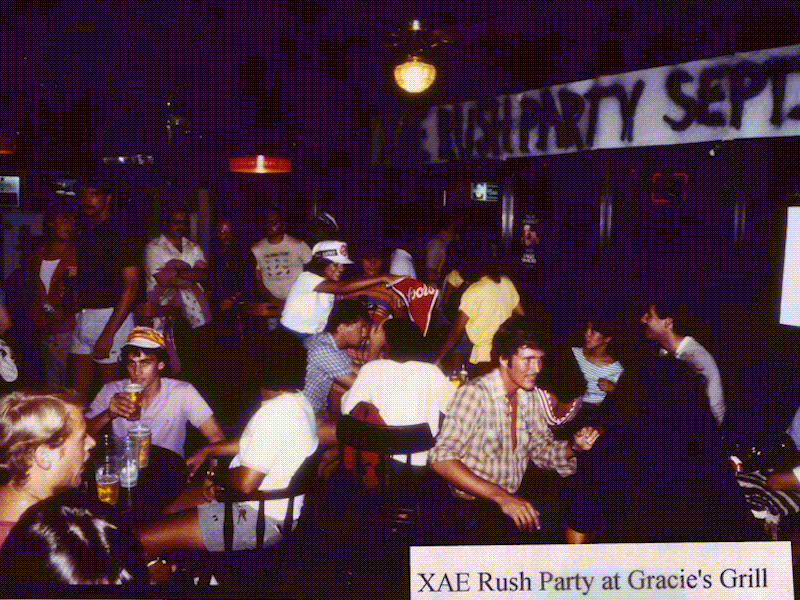
The once-beloved Rathskeller—the word means beer hall in German—arrived on the scene in 1974 (when University House, now known as GC, opened) and welcomed students at a time when the legal drinking age was just 18. Years later, the bar’s name informally morphed into “Gracie’s Grill” for the kindly Gracie DiStefano, who had run a nearby hamburger stand and was known to never turn away any student for lack of funds. The name became official in 1991, when the drinking establishment moved from another location within the student union into the space that is today occupied by Chilis. The latter took over in 2009.
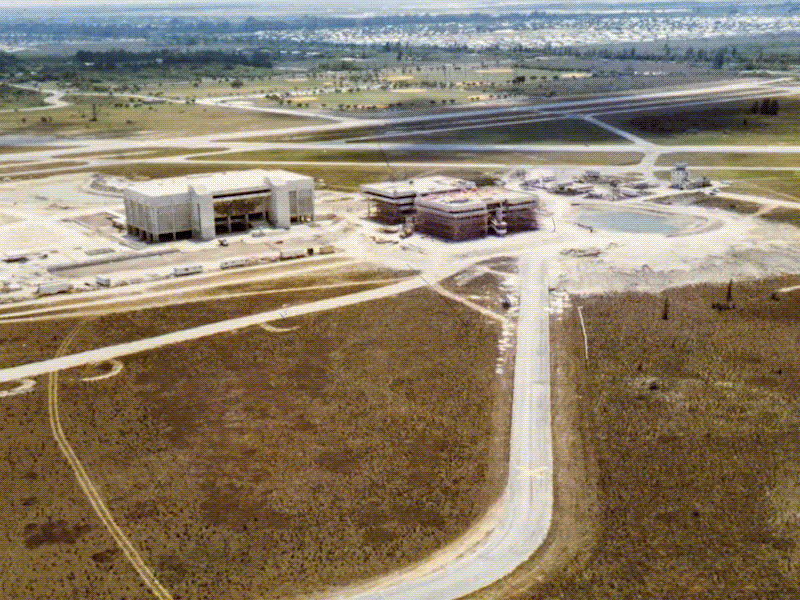
This view from the northeast shows an early MMC with only PC fully completed and DM still in progress. Today the campus boasts more than 60 buildings, among them five new academic health-science centers, five residence halls, a sports arena, a performing arts center and a glorious art museum. Meanwhile, as FIU has grown to two campuses, an Engineering Center and several satellite locations in support of more than 50,000 students, Miami-Dade County has more than doubled in population—to 2,662,874 residents in 2014—since the university opened in 1972.
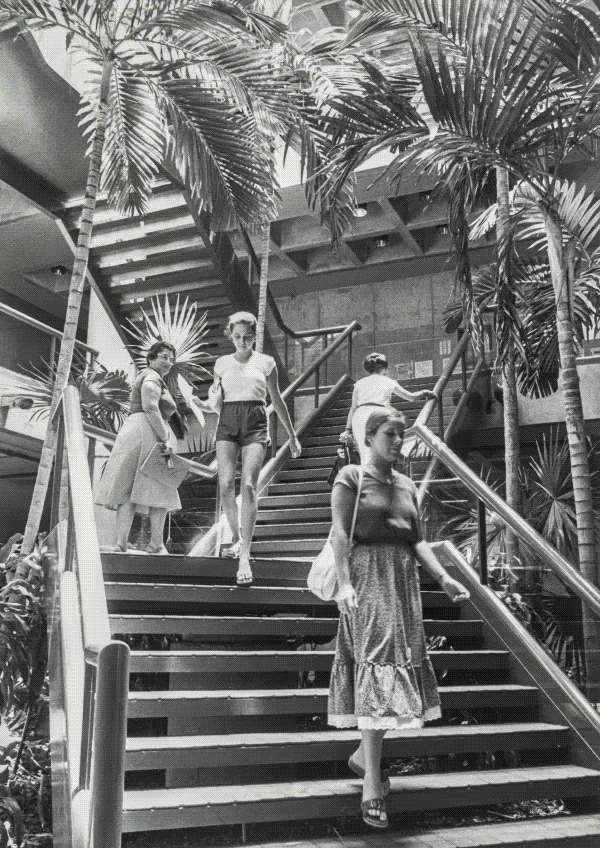
Bathed in natural light and flanked by palms, the stairway in Academic One at the Biscayne Bay Campus in the 1970s bridged the tropical landscape and indoor classroom space. Today sporting a renovation that put a roof overhead, the common area gives off a completely different feel even as it performs the same function.
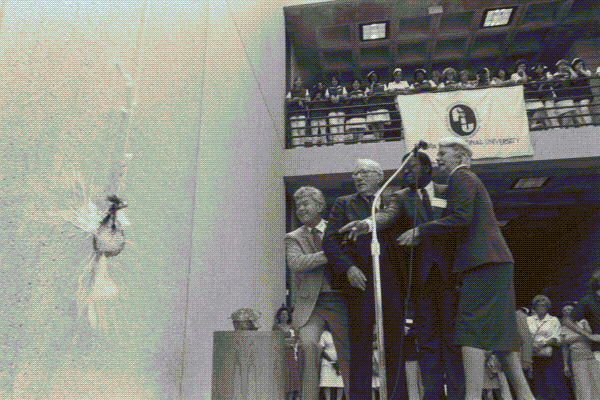
The champagne flowed—helped by FIU’s second president, Gregory Wolfe, far left—at the 1979 dedication of Academic One at BBC. The classroom building today has its twin in the adjoining Academic Two, distinguished for housing the School of Journalism and Mass Communication and the Lillian Lodge Kopenhaver Center for the Advancement of Women in Communication.
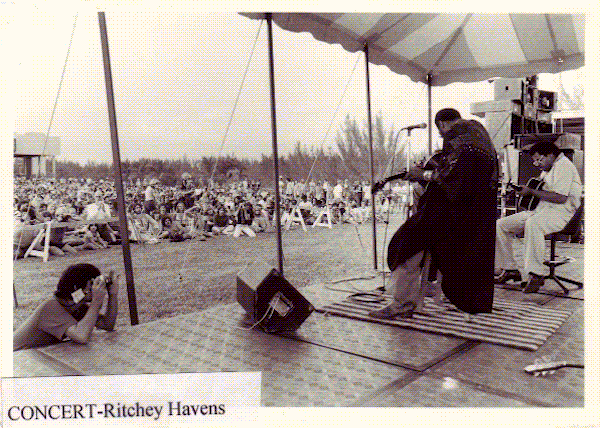
“Suntan Jams” from 1976 to 1979 brought together crowds as big as 15,000 for concerts at BBC, including one by Ritchie Havens, pictured above, who was an opening performer at the famed Woodstock Festival. The lush beauty of the campus today serves as an oasis amidst the hustle and bustle of urban life.
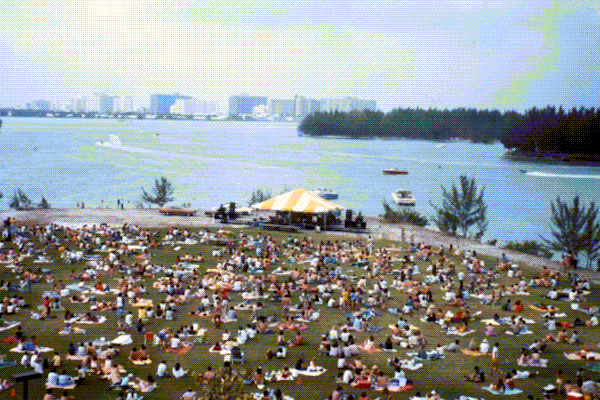
Another shot of BBC’s gorgeous setting on the bay, which in the 1970s served as backdrop for the SunTan Jams concerts enjoyed by students and the local community.
